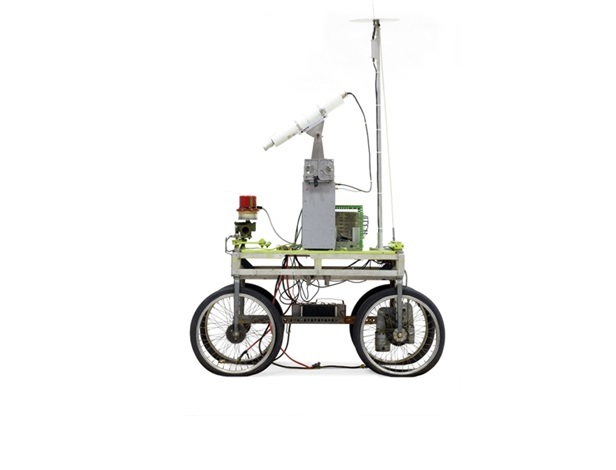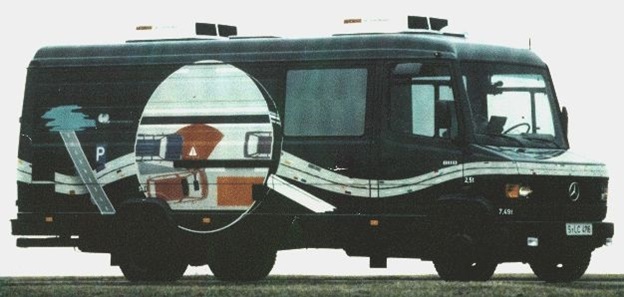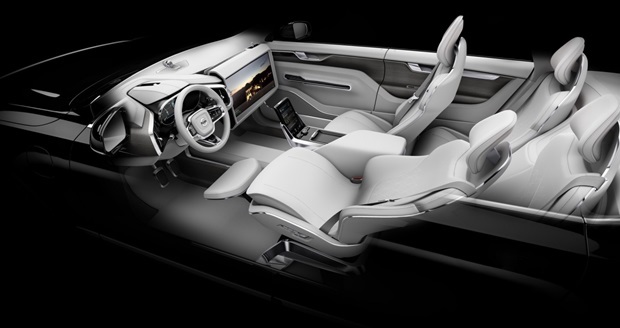A brief history of the development of unmanned vehicles

Prehistory
Recently, literally every day there is news, one way or another, associated with unmanned vehicles. All large auto concerns are actively engaged in the development of robots and technologies for them . Many people may have a false opinion that the history of the development of unmanned vehicles originates in the XXI century. However, few people know that the first attempts to create a fully autonomous car were made in 1980. For example, if you go to the archive of The New York Times articles, then at the request of “unmanned vehicles” , a large amount of material 15 years old will appear.
There are different data when exactly the first fully autonomous vehicles appeared. The fact remains that initially all such developments were created for military purposes. At the beginning of the 20th century, the first research in the field of unmanned aerial vehicles began. As early as 1916, Archibald Lowe created the first drone, a radio-controlled aircraft. During the First World War, air torpedoes and self-propelled German mines were already actively used.
')

However, until the middle of the 20th century, developments in the field of unmanned technology were experimental rather than practical, and, in one way or another, no single model could manage without direct human participation. Unmanned vehicles, like flying drones, were initially conventional remote control prototypes, and only gradually became autonomous.
From scientific experiments to Google robots
The first experiments to create an unmanned vehicle date back to the early 1960s. In 1961, a student at Stanford University, James Adams, as part of his scientific work, created a prototype of a self-guided cart, better known as the "Stanford cart."

The very first model was controlled by transmitting a signal through a cable. The second prototype of Adams has already made radio-controlled. In the 1970s, mathematician John McCarthy perfected the cart, equipping it with a vision system with which the device could partially autonomously move, orienting itself to a white line. The cart also had several cameras, a range finder and four channels for collecting information. Moreover, McCarthy attempted to create a three-dimensional mapping of the environment.
In subsequent years, the main efforts of engineers were mainly focused on the development of a fully autonomous, rather than remotely controlled, controlled transport. At the initial stages, scientists from the USA, Japan and Germany achieved the greatest success. Thus, according to independent experts, the first fully autonomous car was created by a group of German researchers led by robotics pioneer Ernst Dickmans in 1980.

According to this project, Dickmans wrote several scientific papers that described in detail every detail of the mobile. Surprisingly, many technologies used more than 30 years ago, in fact, anticipated much of what is currently used in modern UAVs. For the proper operation of their car, a group of German scientists applied the so-called Kalman filter, parallel computing mechanisms and imitation of saccadic eye movement. In fact, this system was a machine learning model capable of adequately assessing the entire environment.
On the basis of the development of Dickmans from 1987 to 1995, the “Prometheus” project was in operation, aimed at improving unmanned vehicles. More than $ 1 billion was invested in Prometheus, which made it the most expensive project in the history of creating robotic cars in history. In 1994, the car “VAmP” Mercedes equipped with Dickmans technology for several hours independently traveled through the streets of Paris at a speed of up to 130 km / h, turned, overtook other cars and rebuilt from one lane to another.

In the mid-1990s, a major impetus to the development of unmanned vehicles gave a breakthrough in the field of artificial intelligence, neural networks and machine learning. In 2004, the first competition in the world with the participation of the DARPA Grand Challenge robot cars took place, and six years later Google tested its first robot mobiles. After that, the idea of creating unmanned vehicles caught most of the major automotive companies. Currently, the largest players in this field are the companies General Motors, Volkswagen, Audi, BMW, Volvo, Nissan, Google, Tesla Motors and others.
Results and prospects
As you can see, most of the technologies used in modern unmanned vehicles (radar, lidar, various sensors, satellite navigation systems, on-board computers, cameras, etc.) were created more than 20 years ago. Then why unmanned vehicles are still not tightly entered into our lives? In fact, the same Dickmans answered this question in one of his works. He said that in order for the mobile to learn to do everything that a professional driver can do, he needs to learn how to process a huge amount of information and apply it adequately in difficult road conditions.

Therefore, as scientists believe, the longer the car will be in motion, the more it will receive and apply the necessary information. For example, maps with routes are pre-installed in a Google car before the trip. But what if the car will have to move on unfamiliar routes? The company can not yet give a clear answer to this question. The big data technology came to the aid of this and not only problem, with the help of which the unmanned vehicle will receive and transmit large amounts of relevant information. In addition, for the normal functioning of romo mobiles, it is necessary to significantly change the road infrastructure.
Despite all the difficulties in the integration of unmanned vehicles in modern life, there is one big advantage that justifies all the efforts and financial costs. According to official data, 1.3 million people die in road accidents every year. If in the next decade, the share of unmanned vehicles will be at least 10%, every day thousands of deaths can be avoided.
Source: https://habr.com/ru/post/393237/
All Articles